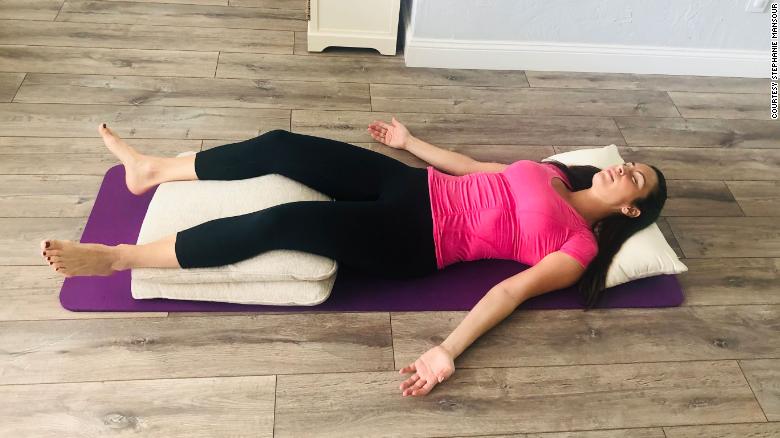Roku integrates the Peloton application at your service 1:07
(CNN) -
As a personal trainer and yoga and Pilates instructor, I like to offer a wide variety of exercises and workouts that people can do regardless of their situation, health limitations, or mood.
So my clients ask me this question all the time: If I feel bad, should I exercise or rest?
The immediate answer is complicated, but with an assessment of your symptoms, you will have the confidence to make a decision more quickly.
And, if the answer is to skip your training, there are still an exercise or two you can do to help you feel less sick.
USCORE | These are the best yoga mats, according to the experts
With cooler winter temperatures in full effect, cold and flu season is here.
On average, Americans get two to three colds each year, according to the US Centers for Disease Control or Prevention (CDC).
This can kill you for seven to 10 days from a cold.
If you add other symptoms, like an upset stomach, fever, or cough, you may be looking for even more downtime.
advertising
Here are the five most common scenarios if you've gotten sick and how you can decide whether to exercise or take it easy.
Important note: be
sure to seek the advice of a healthcare provider if you have persistent symptoms and also before starting a training program.
Cold
Exercise.
If your symptoms include common symptoms like a runny nose and congestion, simply reduce your workout to make it less intense.
Exercising with a cold can help relieve a stuffy nose and open your nasal passages.
Instead of doing a high intensity workout, try a lower impact strength workout.
Or instead of going for a run or jog, go for a brisk walk.
Simply reduce your training so that it is less intense and takes less time than usual.
Try this 5 minute yoga routine before you go to bed
Fever
Stop exercising.
Exercising while you have a high temperature can increase dehydration and raise your internal body temperature even more.
Also, with a fever your muscles are already more fatigued and have less strength, so it is better to give them a rest.
Instead, try doing a yoga pose called Savasana with lots of accessories.
Lie down on the floor.
Put a cushion or pillows under your knees and a pillow under your head.
Relax your arms at your sides with your palms facing up.
Close your eyes and slowly inhale through your nose and exhale through your nose for at least two minutes.
Meditating while breathing deeply has a calming effect on the nervous system and helps calm the body and mind.
Sore throat
Exercise
.
In general, when there is disease in the neck area, it is okay to exercise at a less intense pace.
Make sure to drink plenty of water to calm your throat before, during, and after exercise.
Slow down (as you would if you had a cold).
If your sore throat is accompanied by a fever or body aches, take a break.
Cough
Stop exercising
.
Especially if this cough is coming from your chest and is accompanied by mucus, you should definitely skip your workout.
Coughing frequently can prevent you from being able to catch your breath properly during a workout and make it difficult to breathe deeply when your heart rate increases during exercise.
Instead, do a forward stretch to improve circulation and ease cough symptoms.
It's a stress relieving exercise that invigorates your nervous system and literally turns your head upside down.
Put your head below your heart, a position that calms your mind and reduces stress, both mental and physical.
Stomach ache
Stop exercising.
If you are vomiting or have diarrhea, your body is dehydrated.
Exercise will only increase this dehydration.
Also, if you are nauseous, moving around can cause more nausea or even vomiting.
Instead, try a yoga pose called Child's Pose.
Get on a yoga mat on your knees and open them to the width of your hips.
Next, put your glutes on your heels and extend your arms forward.
Rest your head on the rug or a pillow.
Breathe into your stomach and back and release your breath slowly.
Inhale and exhale through your nose and think about calming your stomach.
How to combat weight gain during the pandemic (beyond diet and exercise)
You are your best defender.
While the above are guidelines you can follow, remember that at the end of the day, you know your body best.
If you feel that you should not do any exercise or, on the contrary, you feel that a workout will make you feel better, listen to your body.
Stephanie Mansour, host of "Step It Up With Steph" on PBS, is a health and wellness journalist and a women's weight loss coach and consultant.
Exercise routine








